People are needlessly burned to death every year due to gas pipeline explosions. In this series of articles, I have discussed government and industry cover-ups due to a process known as water hammer. Lives are destroyed, and our government accepts our deaths as routine business.
Recent disaster articles and cover-ups included international water main breaks (click here), nuclear power plant explosions (click here), flawed nuclear missile defenses (click here), oil spills (click here), and offshore oil-rig explosions (click here). Each of these dangers can be fixed, and the U.S. government lies to us about each of these dangers.
My latest disaster-prevention publication is a detailed explosion study, titled "Fluid Transients Ignited the San Bruno Gas Pipeline Explosions". Although this paper is not scheduled for publication until July, lives are at stake. Accordingly, I will present findings right now.
If the gas companies choose to save lives, I will certainly provide a copy of this referenced paper for their records. In fact, I have already sent a review copy to the Pipeline and Hazardous Materials Safety Administration (PHMSA), and I requested comments. PHMSA is responsible to save us from burn deaths. San Bruno and Carlsbad explosions are both discussed here. A lack of action by the PHMSA constitutes a cover-up.
The new information presented here will induce disagreements in the gas industry. In fact, one reviewer from the gas industry already disagrees with statements presented here. However, he presented no information that changes any information provided here.
The Gas Pipeline Explosion Disaster
Let's look at some recent statistics (Pipeline Explosions in the U.S. Over the Past Decade, Click Here). Figure 2 shows where explosions are distributed throughout the country. Figure 3 shows how deaths and injuries are compared for members of the public to deaths and injuries for gas industry workers, where far more members of the public are killed and injured. Figure 4 shows why the government claims pipelines explode. Nonsense, these government claims are fiction. Our government refuses to act to save lives.
Our Government Lies - As Usual
In reviewing many gas pipeline-explosion reports, there are several common factors.
- The pipelines explode from the inside to the outside.
- The National Transportation Safety Board (NTSB) and the PHMSA claim that there were unknown ignition sources that detonated the explosions.
- These unknown ignition sources are always claimed to be external to the pipeline.
How can natural gas - 95% methane - light-up from a spark outside the pipe, and then explode from the inside of the pipe. The PHMSA, the NTSB, and the gas industry all expect us to believe that an explosion occurs in two places at the same time. Not only do they talk to us like we are completely stupid, but they have gotten away with treating us like idiots.
Murder is defined as 'The unlawful killing of another human being without justification or excuse' (al-dictionary.thefreedictionary.com/murder). Since PHMSA has been repeatedly warned of their flagrant dismissals of facts that cost lives, is this organization committing murder ("Gas Pipeline Explosions and Deaths Can Be Stopped! - The San Bruno and Carlsbad Pipelines - Explosion Cover-ups", click here)?
Why Gas Pipelines Explode
A process known as fluid transients explodes gas pipelines. When valves in gas pipelines are operated, pressure waves travel throughout pipelines. These pressure waves ignite air trapped in those pipelines to cause explosions in a process known as autoignition. When you squeeze methane and air they heat and blow up.
Now comes the next lie. The so-called experts say that there is no air in the pipelines, and nobody can prove different. They refuse to test for air in pipelines. Explosions ignite frequently, people are burned to death, and the gas industry and gas industry regulators refuse to test for explosion pressures in the pipelines. They control the pipelines, and they prevent any evidence against them from being collected.
BANG. Pipelines are exploding all over our country. Those explosions and burn deaths every year are the evidence.
Air is heavier than methane and collects at low points in the pipelines, called drip legs. These drip legs are used to drain excess water from pipelines to stop corrosion, or rust. Any trace amounts of air in the gas will naturally fall out of the gas at the lowest points and accumulate in the drip legs, in a process called diffusion. Bombs are then waiting to happen at system low points when valve-induced pressure waves squeeze air and gas to detonate.
Call this detonation Explosion 1. Explosion 1 cracks the pipeline and gas blows out of the pipe into the air to create a hissing sound. In the wake of Explosion 1, a vacuum pressure is created, and air is sucked into the pipeline. Also, Explosion 1 blasts out into the rest of the pipeline as a pressure wave. This wave bounces back from distant locations in the pipeline.
When the pressure wave gets back to the air that was just sucked in, another explosion detonates. Call this Explosion 2. This explosion starts to rip the pipeline apart, multiple detonations in the crater cause pressures sufficient to force unburned air into the pipeline, large amounts of air are sucked into the pipeline, and larger explosions detonate. Call this Explosion 3.
Explosion 3 is typically very large. Since the gas industry does not measure gas explosion pressures, there are many unrecorded explosions that detonate in our cross-country pipelines - maybe hundreds or thousands. We do not know how many explosions ignite in our pipelines.
The Lies Continue
However, we do know about the big explosions. San Bruno burned 8 people to death. Carlsbad burned 12 people to death; pipeline explosions burst into the air every year. Every time that there is an explosion, the published cause is an unknown explosion source - nonsense.
I have sent multiple emails stating that 'PHMSA kills people' ("DOT responses to emails", Click Here). Since 2019, I sent an email whenever I saw a major explosion on the internet. The NTSB and the PHMSA refuse to consider these new findings, and again claim that some miraculous explosion cause blows up outside a pipeline and blows the pipeline outwards. Such claims are not magic; they are lies.
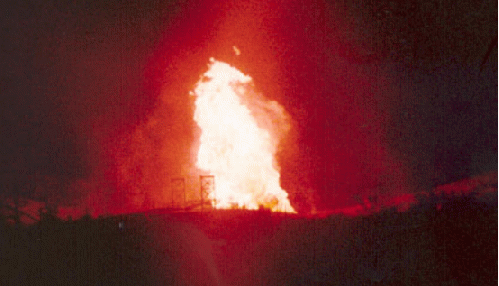
Figure 5: Carlsbad explosions. At the lower left of a fireball, the 85-foot-tall support structures for the pipeline suspension bridges can be seen. Corrosion was grasped as an explosion cause.
(Image by US government) Details DMCA

Figure 6: Carlsbad explosion site. Trespassing campers were falsely blamed for the explosion by using their camp stove.
(Image by US government) Details DMCA
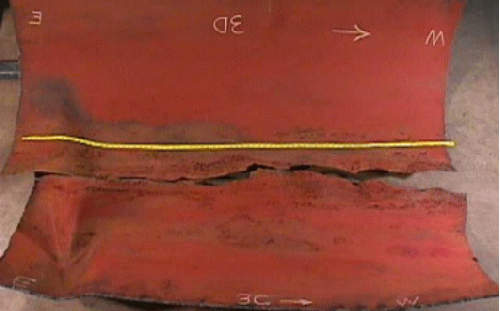
Figure 7: Cracked pipe from Carlsbad explosion. A weakened pipe from corrosion cracked first.
(Image by US government) Details DMCA
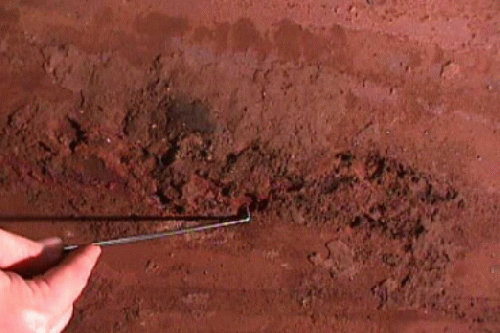
Figure 8: Carlsbad corrosion. Yes , there was corrosion, but air was needed inside the pipe to ignite an explosion to crack the pipe.
(Image by US government) Details DMCA
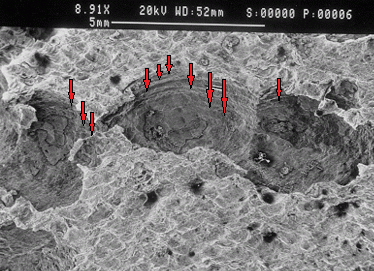
Figure 9: Fatigue striations indicate multiple detonations before the Carlsbad disaster.
(Image by Adapted from US government) Details DMCA
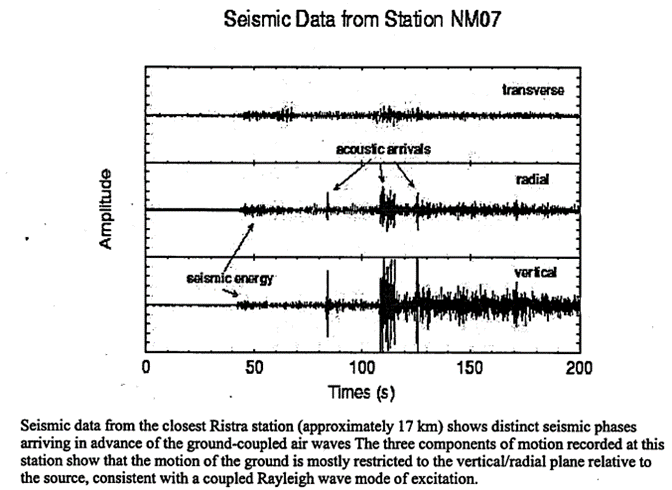
Figure 10: Typical seismometer data that shows the ground - primarily shaking up and down.
(Image by Adapted from US government) Details DMCA
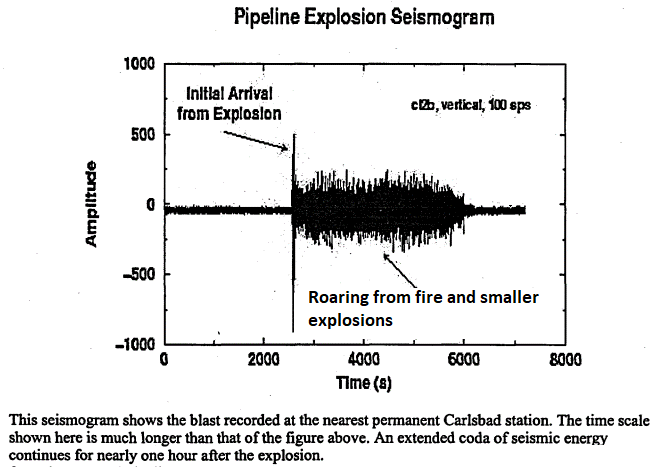
Figure 11: Seismometer showing a recorded detonation wave and a recording of the subsequent pressure waves from explosions at the base of the roaring fire.
(Image by Adapted from US government) Details DMCA
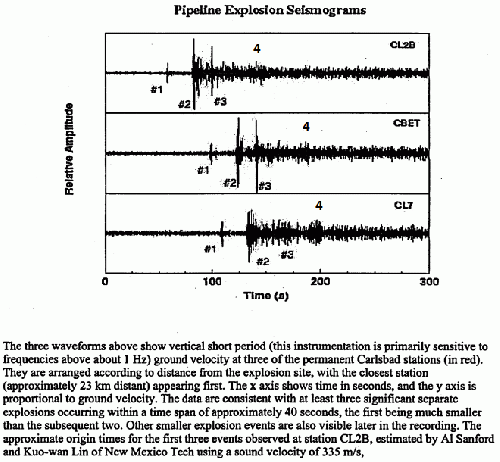
Figure 12: Explosions 1, 2, 3, and 4 were measured near the Carlsbad explosion site. Three distinct explosions were measured..
(Image by Adapted from US government) Details DMCA
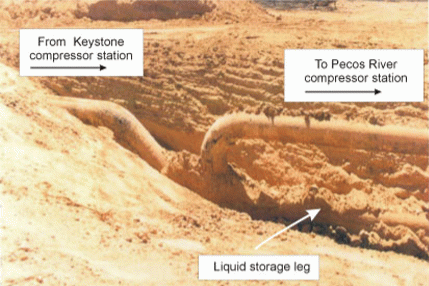
Figure 13: Partially buried drip leg where air accumulates and explosions ignite.
(Image by US government) Details DMCA
Carlsbad Explosions
Proofs for the Carlsbad explosions were not properly investigated by the NTSB, but drip legs, a low elevation, and air-entrapment conditions were all present to ignite explosions. Operations information to properly investigate the Carlsbad explosions is not included in NTSB reports. Again, damaging information is withheld from us.
Even so, the NTSB damage reports clearly show that three explosions detonated at Carlsbad. Figures 5 and 6 show the fire and extensive Carlsbad damages. Figures 7 and 8 show piping-corrosion damage. Corrosion certainly weakened the pipe wall, but corrosion did not burst the pipe. Explosion 1 burst the pipe.
Fatigue Corrosion due to Multiple Explosions Inside the Carlsbad Pipeline
Explosion 1 was the latest in a series of explosions inside this Carlsbad pipeline. In Figure 9, striations can be clearly seen as corrosion bands around the interior of corrosion pits. These bands form between the times for different explosions, which occurred inside the pipeline. Each of multiple explosions permitted corrosion to accelerate into the pipe wall, and fatigue corrosion bands formed after each explosion.
As a new scientific finding, note that some of the corrosion bands extend across multiple pits, where this observation enforces the conclusion that fatigue corrosion was present. Each successive explosive blast removed accumulated corrosion products. The etching into the pipe walls accelerated at different depths - layer by layer - to form bands of corrosion in the corrosion pits.
Striations in Figure 9 show that at least 6 explosions occurred before Explosion 1 at Carlsbad. Explosion 1 was the blast from the drip leg near the explosion. Explosion 1 cracked all the way through the pipe wall, and Explosion 1 was actually the seventh explosion - at least - inside the Carlsbad pipeline.
Once the pipe ruptured, air rushed in, and Explosions 2 and 3 blew the pipeline into the air, along with the dirt from the crater.
Explosion Analysis
Figures 10, 11, and 12 show seismometer data recorded near the Carlsbad explosions. Seismometers measure earthquakes, and in this case explosion pressure waves were measured. Of major importance to this research, Figure 12 clearly depicts three distinct explosions. Explosion 1 had the smallest forces at the seismometers, which was expected since Explosion 1 blew up inside the pipe. Explosions 2 and 3 ripped the pipe apart and created the crater.
Explosion 4 ignited unburned gasses near the mouth of the crater.
Clearly, such an explosion did not ignite outside of the pipeline. The explosion blew outwards and exploded tons of dirt and rock into the air. Explosions ignited in the drip leg shown in Figure 13.
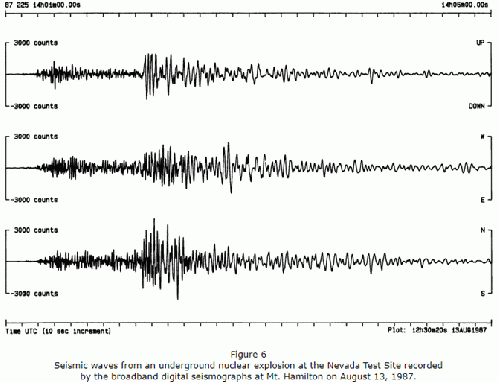
Figure 14: Nuclear Explosion seismographs for a buried nuclear weapon.
(Image by University of California) Details DMCA
Multiple Carlsbad Crater Explosions Before and After Explosion 3
Figure 11 also provides other new information about pipeline explosions inside craters. The NTSB report stated that the seismometer vibrations after Explosions 1 through 3 were caused by the fire in the air above the crater. This statement is incorrect. The pressure waves from a fire were far too small to cause vibrations of nearly the same magnitude as explosions. In other words, explosions ignited over and over as more gas poured into the flaming crater. When the gas was shut off, these additional explosions stopped.
As a parallel example, consider seismic data from a nuclear explosion, which was detonated underground (Figure 14). Clearly, there was only one nuclear explosion, but pressure waves bounced back and forth inside the underground crater for more than five minutes.
Similarly, explosion waves bounced off the walls of the Carlsbad crater. One difference was that Carlsbad experienced an open crater, and pressure waves inside that crater were ignited by ongoing explosions due to an inrush of exploding natural gas. Judging form Figures 11 and 12, there were hundreds of explosions as gas entered the inferno. For reference, note that the San Bruno explosions were reported as sounding like a jet engine or explosions.
In short, the four primary explosions were identified, but many other explosions ignited at Carlsbad.
Scapegoats rather than Solutions
Investigators found scapegoats. Trespassing campers were blamed for the explosions. The NTSB official story is that fire from the campers' stove ignited the inferno. The official story claims that a fire flashed back to the underground pipe and exploded that pipe, which supposedly had no air inside. Such a monumental outward blast demanded air inside the pipe to explode.
Although I accuse the NTSB and PHMSA of lying, I have spoken to engineers with the gas industry and PHMSA. They believe this story of a camp-stove explosion. The facts violently disagree with their beliefs. Three fluid transient explosions detonated near Carlsbad, New Mexico.

Figure 15: Aerial views of the San Bruno explosion that killed 8 people.
(Image by US government) Details DMCA
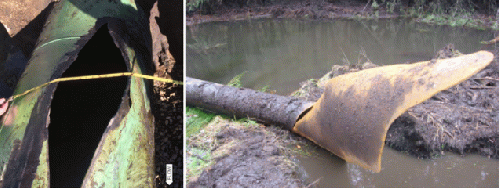
Figure 16: Amherst explosion (left) shows a typical outward explosion that occurs when gas pipelines explodes. Although the blast wave was not measured, a pressure surge from 1170 psi to 1350 psi was measured.
(Image by US government) Details DMCA
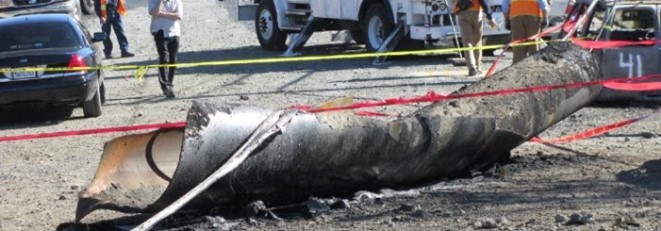
Figure 17: San Bruno exploded pipe. The pipe blew into the air from the crater, and landed 100 feet away from the crater.
(Image by US government) Details DMCA
Lives Can Be Saved
Returning to Figure 3, nearly all of the listed fictitious explosion causes, except excavations, are related to fluid transient ignited explosions, and lives can certainly be saved in non-excavation explosions.
- Explosions ignite at pipeline low points.
- Explosions ignite where air can collect.
- Explosions always explode outwards.
- Several explosions ignite.
- Given the new technology presented here, even excavation explosions may be better understood during further research.
- Perhaps lives can be saved from excavation explosions as well.
This lack of technology has lasted so long that we have no idea of the full scope of this explosion-disaster problem.
For certain, explosions like Carlsbad and San Bruno could have been prevented (Figures 15, 16, and 17), where drip legs were near explosion locations for each case. As long as we allow U.S. government and the gas company inaction, people will unnecessarily burn to death every year in fires near temperatures of two-thousand degrees Centigrade (3550 degrees Fahrenheit).
If our government acts, lives can be saved!
Addendum
The following letter was sent to the PHMSA.
Gas Pipeline Deaths Can Be Stopped!!
Many gas pipeline explosions can be stopped to save lives. However, PHMSA continues to allow these explosive burn deaths to continue. The time has come for PHMSA to address pipeline deaths.
An Op Ed was published last night, and the article primarily focuses on the Carlsbad pipeline explosion, which killed 12 people. ("Gas Pipeline Explosions and Deaths can be Stopped! - The San Bruno and Carlsbad Pipeline [Explosions]".
Given the strong resistance to this new theory, I backed off from accusing the PHMSA and NTSB from an intentional, decades-long cover-up. Perhaps they are only guilty of being irresponsible in their investigations. However, the NTSB and the PHMSA have been repeatedly informed of these concerns, and they refuse to act on new information, or even answer emails that accuse them of endangering our lives. Beginning in 2019, such inaction was the start of a cover-up of gas pipeline explosion causes. Again, gas pipeline explosions can be stopped!
(Article changed on Jan 09, 2023 at 5:09 PM EST)








